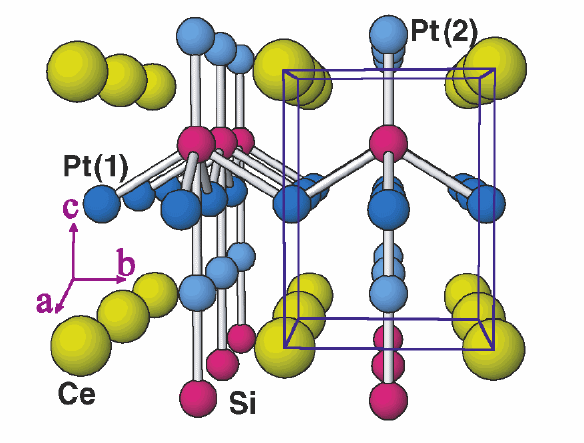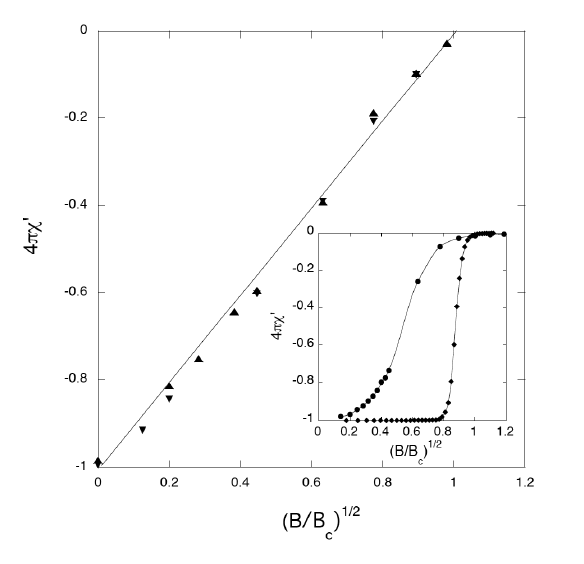
The crystal structure on the left is that of CePt3Si, which is a non-conventional heavy fermion superconductor (Tc~1K). This material is unusual in that its crystal structure lacks inversion symmetry. This broken symmetry along with the fact that CePt3Si has a strong spin-orbit coupling is believed to be responsible for its nodal gap stucture. We made some of the first low tempertature susceptibility measurements on poly-crystalline samples produced by Prof. David Young. As described below the field dependence of the susceptibility in anomalous.
The Be/Au bilayer systems that we have recently been studying also lack inverstion symmetry. Indeed, we feel that the bilayer geometry may afford a more straightfoward way to disentangle the roles spin-orbit coupling and inversion symmetry in the formation of the condensate.

On the left is shown the square-root field dependence of the susceptibility of two CePt3Si samples at 70 mK. The line is provided as a guide to
the eye. Interestingly, the susceptibility was not hysteretic. We believe the power-law scaling is a consequence of the nodal gap structure.
Inset: the circles represent the 10 K susceptibility of the noncentrosymmetric A15 superconductor V3Si. The diamonds
are data from a Pb sample alloyed with 5% Sn in order to make it type II. Note that neither of these latter systems obey a
square-root scaling law.
Read more: